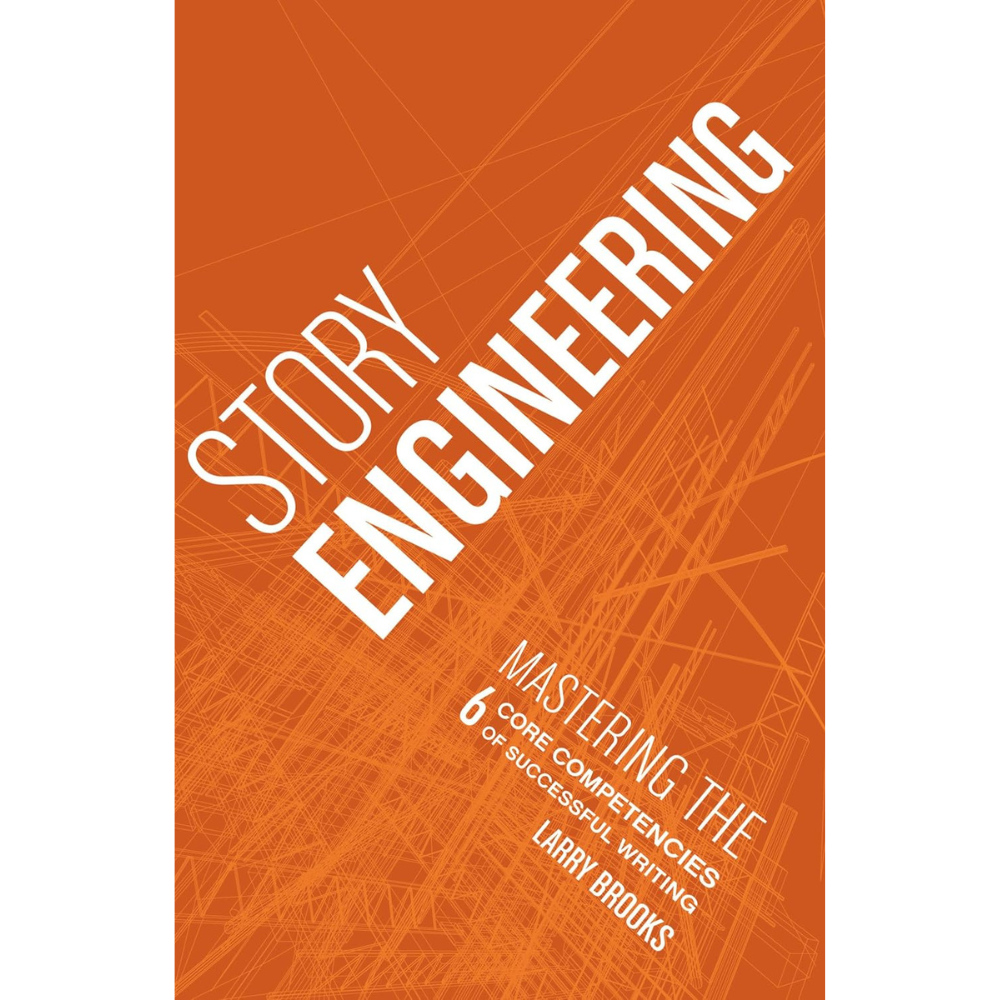📖 Story Engineering – Larry Brooks
What This Book Covers
Story Engineering by Larry Brooks takes a highly structured, almost scientific approach to storytelling, breaking it down into six core competencies that serve as the foundation for a well-constructed novel. The book dives deep into:
Concept: How to generate and refine a high-concept idea that carries a novel.
Character: The role of deep, multi-layered characters in driving a compelling narrative.
Theme: Weaving meaningful themes into the story to create emotional resonance.
Story Structure: A detailed look at the Four-Part Structure and how each phase supports tension and pacing.
Scene Execution: How to craft dynamic, purposeful scenes that push the story forward.
Writing Voice: Developing a unique style and tone that makes a story stand out.
Why I Love It
Unlike many writing craft books that take a more intuitive or artistic approach, Story Engineering is highly methodical and analytical, making it a great choice for writers who love clear frameworks and structured guidance. Here’s what makes this book stand out:
A Comprehensive Blueprint for Storytelling: Brooks lays out a roadmap for novel writing, making it clear what elements need to be developed and when.
The Four-Part Story Structure is Game-Changing: It goes beyond the traditional three-act structure, offering a more detailed breakdown that keeps pacing tight.
Focus on the Intersection of Planning & Creativity: The book emphasizes story architecture, helping writers shape their narrative effectively without stifling creative instincts.
Key Takeaways & What I Learned
Structure is Non-Negotiable: Even the most character-driven stories need a strong, intentional framework to be compelling.
Concept is Different from Premise: A great story idea isn’t just a premise—it needs a high-concept angle that makes it fresh and marketable.
The “Midpoint” is Crucial: The middle of the novel should serve as a turning point, shifting the stakes and deepening the conflict.
What I Loved About This Book
✅ Highly Analytical Approach: Perfect for writers who prefer logic-driven, structured storytelling methods.
✅ Detailed Breakdown of Story Elements: Brooks doesn’t just say “have strong characters” or “write a great plot”—he shows exactly how to do it.
✅ A Great Guide for Outlining: If you struggle with developing your story before drafting, this book provides a clear pre-writing strategy.
What Could Be Better
Not for Pure Discovery Writers: Writers who enjoy a more organic, unstructured writing process may find this approach too rigid.
A Bit Dense: The book is information-heavy, and some sections may take multiple reads to fully absorb.
Final Verdict: Is It Worth Reading?
Maybe! If you’re a writer who thrives on structure and loves breaking down the mechanics of storytelling, Story Engineering is an invaluable resource. It’s especially helpful for plotters, outliners, and those who want to refine their understanding of how great stories are built from the ground up.
Let’s Chat!
Have you read Story Engineering? Do you prefer a structured writing approach or a more freeform style? Let’s discuss in the comments! And if you enjoyed this review, subscribe to my newsletter for more writing insights and book recommendations!


